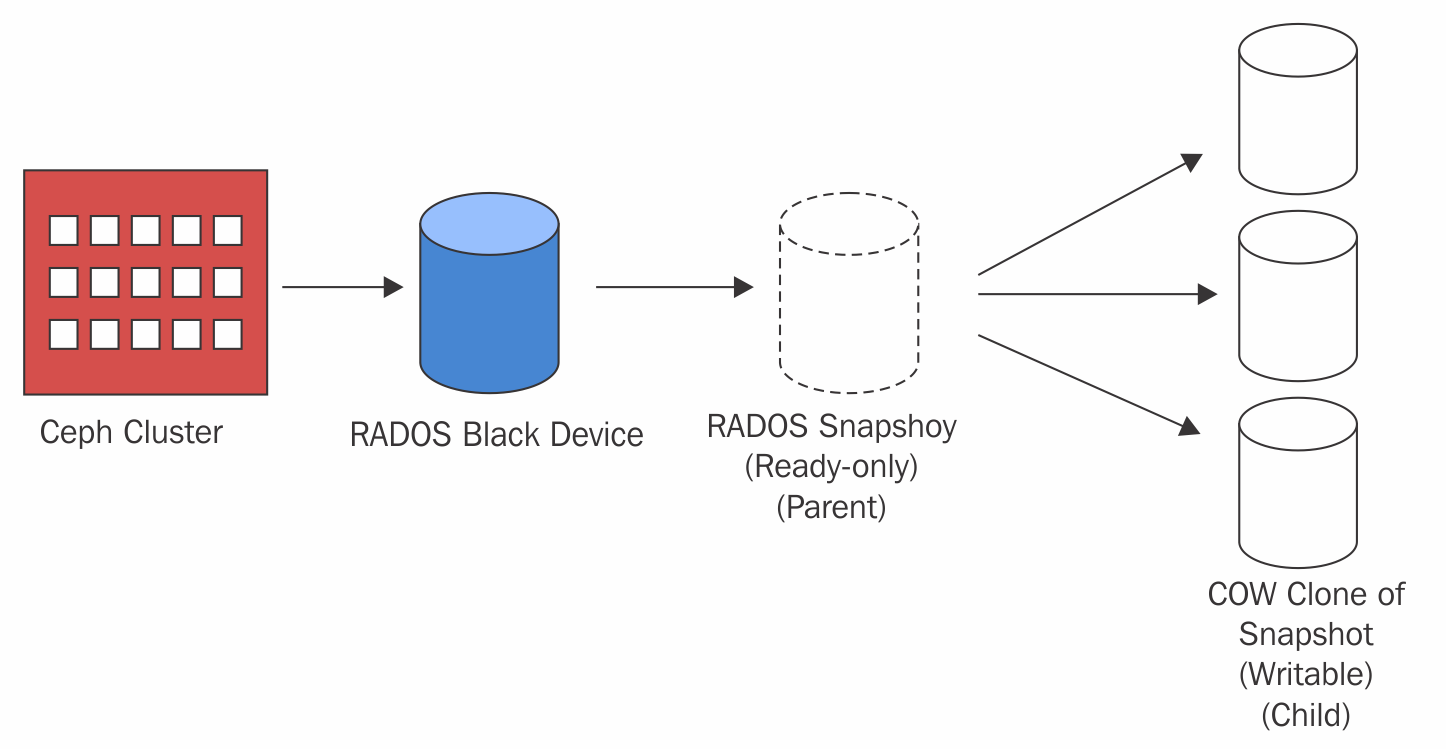Ceph supports a very nice feature for creating Copy-On-Write (COW) clones from RBD snapshots. This is also known as snapshot layering in Ceph. Layering allows clients to create multiple instant clones of Ceph RBD. This feature is extremely useful for cloud and virtualization platforms such as OpenStack, CloudStack, Qemu/KVM, and so on. These platforms usually protect Ceph RBD images containing an OS/VM image in the form of a snapshot. Later, this snapshot is cloned multiple times to spawn new virtual machines/instances. Snapshots are read-only, but COW clones are fully writable; this feature of Ceph provides a greater level of flexibility and is extremely useful in cloud platforms. In the later chapters, we will discover more on COW clones for spawning OpenStack instances:

Every cloned image (child image) stores references of its parent snapshot to read image data. Hence, the parent snapshot should be protected before it can be used for cloning. At the time of data...



